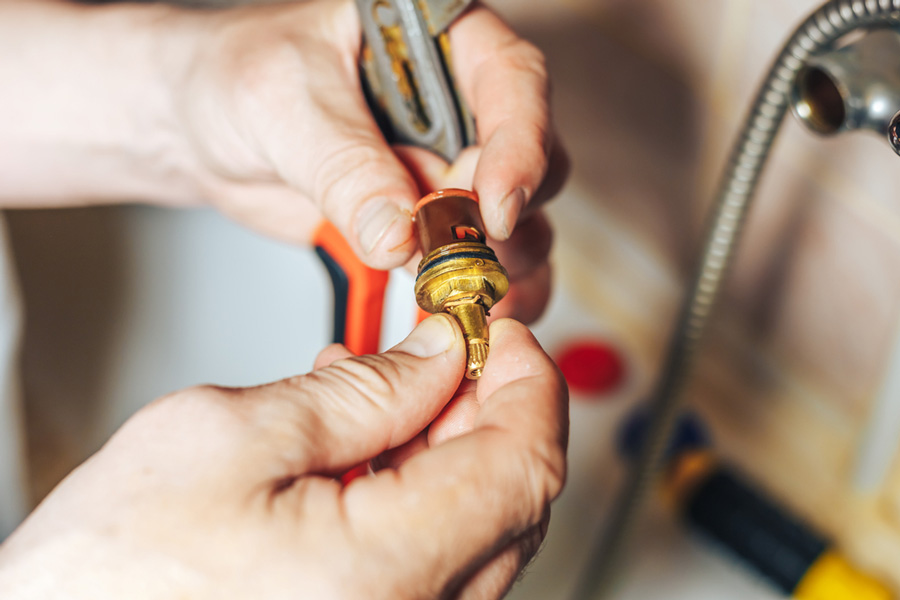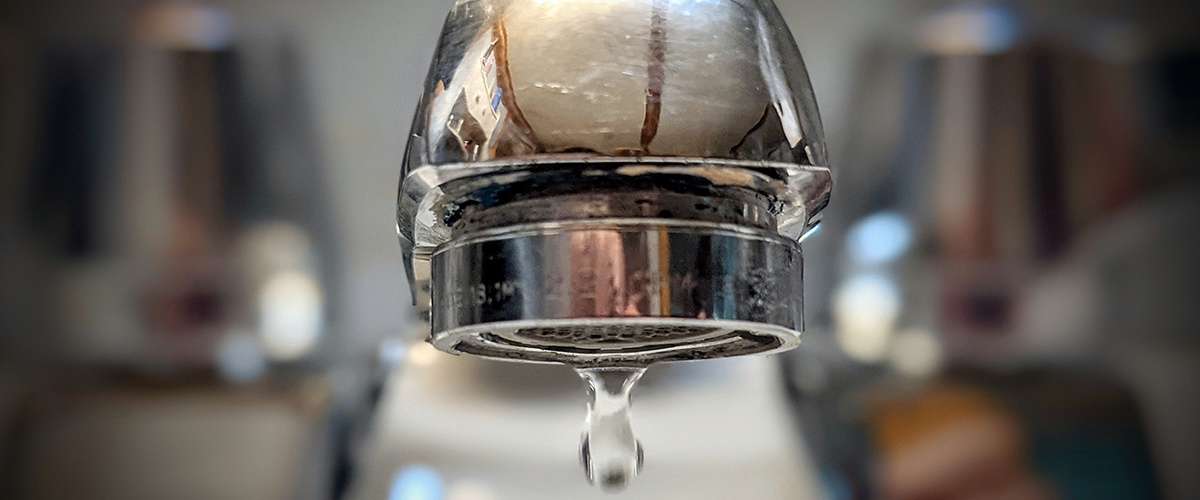My Motives Behind Correcting a Dripping Faucet
My Motives Behind Correcting a Dripping Faucet
Blog Article
On this page below you can locate lots of excellent expertise related to How to Fix a Dripping or Leaky Faucet .

Trickling faucets could look like a small inconvenience, yet their impact exceeds just the nuisance of the audio. From wasting water to sustaining unneeded financial expenses and wellness risks, disregarding a leaking tap can lead to various repercussions. In this write-up, we'll look into why it's vital to resolve this usual house concern promptly and effectively.
Wastage of Water
Environmental Impact
Dripping faucets add significantly to water wastage. According to the Environmental Protection Agency (EPA), a solitary faucet trickling at one drip per second can throw away more than 3,000 gallons of water per year. This not just strains water resources but also impacts ecological communities and wildlife dependent on them.
Step-by-Step Guide to Repairing a Dripping Tap
Devices Called for
Prior to trying to fix a dripping tap, gather the essential tools, including an adjustable wrench, screwdrivers, replacement parts (such as washers or cartridges), and plumber's tape.
Typical Faucet Issues and Their Solutions
Determine the type of tap and the certain issue triggering the drip. Typical problems consist of damaged washers, rusty valve seats, or faulty O-rings. Describe producer guidelines or on the internet tutorials for detailed assistance on repairs.
Financial Costs
Boosted Water Bills
Beyond the ecological impact, leaking taps can inflate water expenses considerably. The built up wastefulness over time translates into greater utility costs, which might have been stayed clear of with prompt repairs.
Potential Property Damage
Moreover, prolonged dripping can result in damage to components and surface areas surrounding the faucet. Water accumulation can cause staining, rust, and even structural concerns if left ignored, causing additional fixing costs.
Health and wellness Concerns
Mold And Mildew and Mildew Growth
The consistent presence of wetness from a trickling tap creates a suitable setting for mold and mildew growth. These fungi not just compromise indoor air high quality however likewise posture wellness risks, particularly for individuals with respiratory problems or allergies.
Waterborne Illness
Stationary water in trickling faucets can end up being a breeding ground for bacteria and other pathogens, boosting the threat of waterborne diseases. Impurities such as Legionella germs prosper in stationary water, possibly resulting in serious ailments when consumed or inhaled.
Do it yourself vs. Expert Repair work
Advantages and disadvantages of Do It Yourself Repair Service
While some may try to repair a trickling faucet themselves, do it yourself repair services come with their own collection of difficulties. Without correct understanding and devices, DIY attempts can aggravate the issue or cause incomplete repair work, lengthening the problem.
Benefits of Employing a Specialist Plumber
Employing a specialist plumber ensures that the underlying reason for the leaking tap is resolved properly. Plumbings possess the know-how and tools to detect and fix tap problems effectively, conserving time and reducing the threat of additional damages.
Environmental Duty
Individual Payment to Preservation
Taking obligation for fixing trickling faucets straightens with broader initiatives toward water preservation and environmental sustainability. Every individual's activities collectively make a significant impact on preserving priceless resources.
Sustainable Living Practices
By focusing on timely repairs and embracing water-saving practices, individuals add to sustainable living techniques that benefit both present and future generations.
Preventive Measures
Normal Upkeep Tips
To stop dripping faucets, execute routine maintenance such as cleansing aerators, inspecting for leaks, and changing damaged components promptly. Additionally, think about mounting water-saving tools or upgrading to much more effective components.
Importance of Prompt Fixes
Attending to leaking faucets as quickly as they're noticed avoids more water waste and possible damage, inevitably saving both water and money in the long run.
Influence On Residential Property Worth
Understanding of Well-Maintained Building
Maintaining a building in good condition, consisting of addressing upkeep concerns like trickling taps, boosts its viewed value and value among potential customers or lessees.
Impact on Resale Value
Residences with well-kept plumbing fixtures, including taps, command greater resale worths in the realty market. Dealing with leaking taps can add to a favorable impact throughout property examinations and arrangements.
Final thought
Dealing with a trickling tap exceeds simple comfort; it's a vital step toward preserving water, minimizing financial expenses, and safeguarding wellness and home. Whether through do it yourself repair work or expert aid, taking action to take care of trickling faucets is a tiny yet impactful means to advertise accountable stewardship of sources and add to a healthier, more sustainable future.
How to Fix a Leaky Faucet: Step-by-Step Repair Guide
A leaky faucet may seem like a simple annoyance, but if it's not fixed promptly, that leak could cost hundreds to potentially thousands. From water damage to mold, mildew, and high water bills, even a tiny leak can be catastrophic if left unattended. Damage like this can even affect the overall value of your home, so it's important to take the right approach for leaky faucet repair. You may need the help of a plumber in some cases, but we've got a few tips you can try on how to fix a leaky faucet before calling the pros.
Four Faucet Types
When you're learning how to fix a leaky faucet, the first step is knowing what kind of faucet you're working with! There are four common types.
Cartridge Faucets
Cartridge faucets come in one- or two-handled varieties. In one-handled cartridge faucets, hot and cold water combines in a single cartridge. In the two-handled versions, hot and cold water are controlled separately and mixed in the faucet.
Ball Faucets
Ball faucets have a single lever you push up and down to adjust the pressure and rotate to change the temperature. A slotted metal ball controls the amount of water allowed into the spout.
Compression Washer Faucets
They're the oldest type of faucet, but they're still used in many homes — especially older ones. Compression faucets have two separate handles that, when turned, raise or lower the washer that seals a water valve. This valve stops water from flowing through the faucet when it is turned off.
Disc Faucets
Disc faucets rarely need to be repaired due to their maintenance-free design. The water flow is controlled by two discs — the upper one raises and lowers against a fixed lower disc, creating a watertight seal. If your disc faucet starts leaking, you may need to replace the seals or clean residue buildup from the inlets.
Fixing a Leaky Faucet
Step 1: Turn Off the Water
Whether you're learning how to fix a leaky bathtub faucet or how to fix a leaky kitchen faucet, always turn off the water supply to your working area when you're fixing a leak. The last thing you want is a flood added to your list of things to fix.
Look for the shutoff valves below your sink or around the tub and turn them clockwise to stop the water flow. If your faucet doesn't have shutoff valves, you may need to turn off the water for the whole house. Check to make sure it's off by turning the faucet on. If nothing comes out, you're ready to start the repair.
Step 2: Take Apart the Faucet
How you disassemble your faucet depends on the type of fixture you have. You can use a flathead screwdriver to remove the caps on top of the handle or handles for cartridge and compression faucets. Inside, you should see handle screws. Unscrew these with a screwdriver to remove the handle.
Disc- and ball-style faucets will typically have an inlet screw near the handle, and removing that will reveal the interior of the faucet.
Detach the Valve Stem
For cartridge- and compression-style faucets, you'll see the inner valve stem or cartridge once you remove the faucet handles. If you have a compression faucet, unscrew the brass valve stem. If you have a cartridge faucet, pull out the cartridge. If your cartridge has been in place for a while, it may require some tools or extra force to remove it due to mineral deposits.
Examine and Replace Parts
Once you've removed the parts, check them out to confirm what needs to be replaced. You may see corroded rubber washers, O-rings, stems, or cartridges. On a ball-style faucet, check the seats and springs for damage.
If you need to repair a leaky disc faucet, check the inlet and seals on the lower disc.
Once you determine what parts must be replaced, visit your local hardware store. Bring the damaged parts with you to ensure you can purchase the correct components to replace them.
Clean Valves and Faucet Cavity
If you've removed a stem or cartridge, you may notice mineral buildup in the faucet's threads. Use white vinegar to clean the valve seat by soaking it for a few minutes, then scrub it away with a soft toothbrush and rinse with warm water. You can also clean the interior of the faucet in the same way.
Reassemble the Faucet
Once your faucet is cleaned and the required parts have been replaced, it's time to reassemble it. Put the pieces back together and slowly turn the water supply back on. Doing this slowly is crucial because too much initial water pressure can damage the new hardware you've just installed.
https://homewarranty.firstam.com/blog/how-to-fix-leaky-faucet

I am very serious about Why Are My Faucets Dripping (And Can I Fix It Myself)? and I hope you appreciated our post. Enjoyed our posting? Please quickly share it. Help another person discover it. Thanks for taking the time to read it.
Report this page